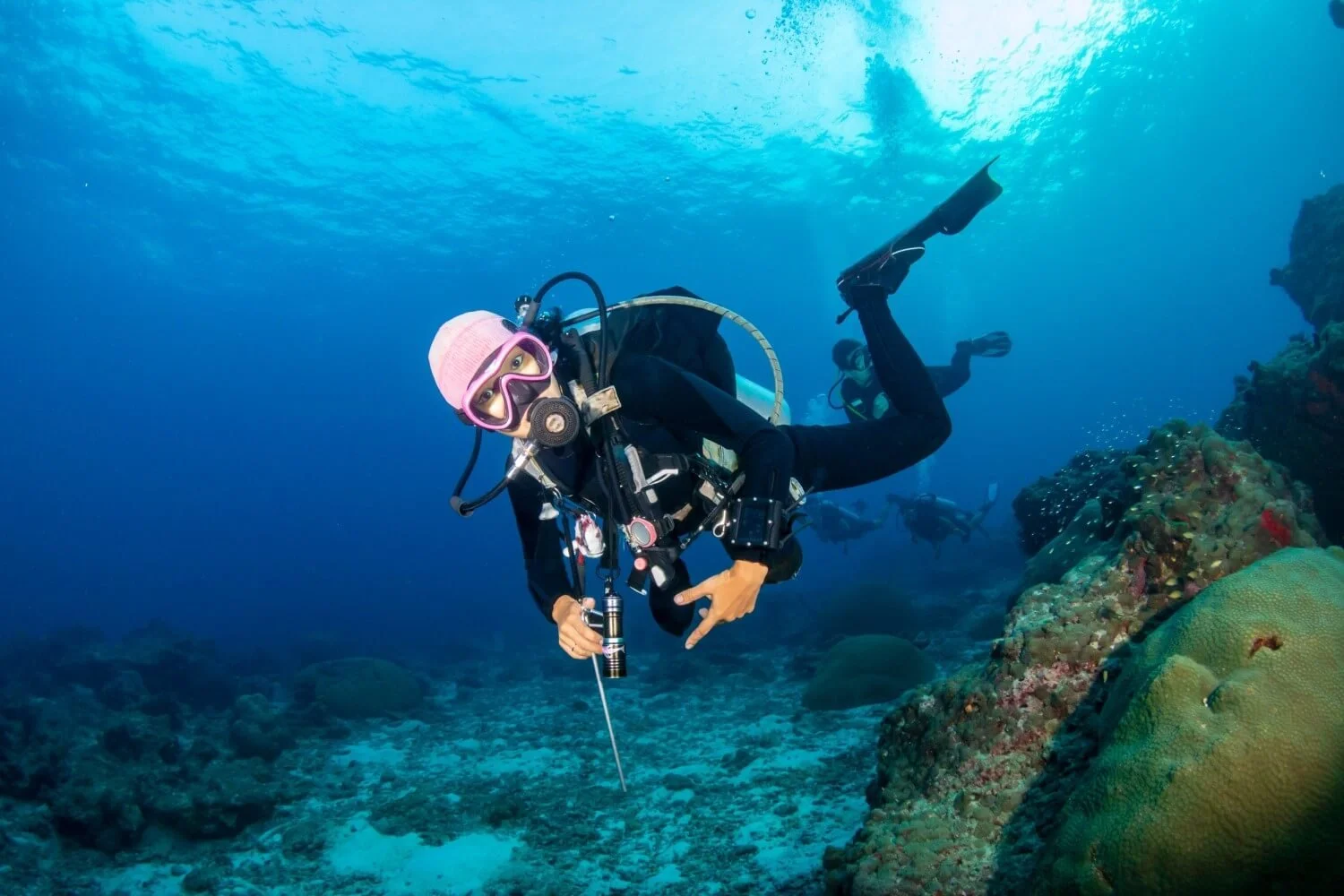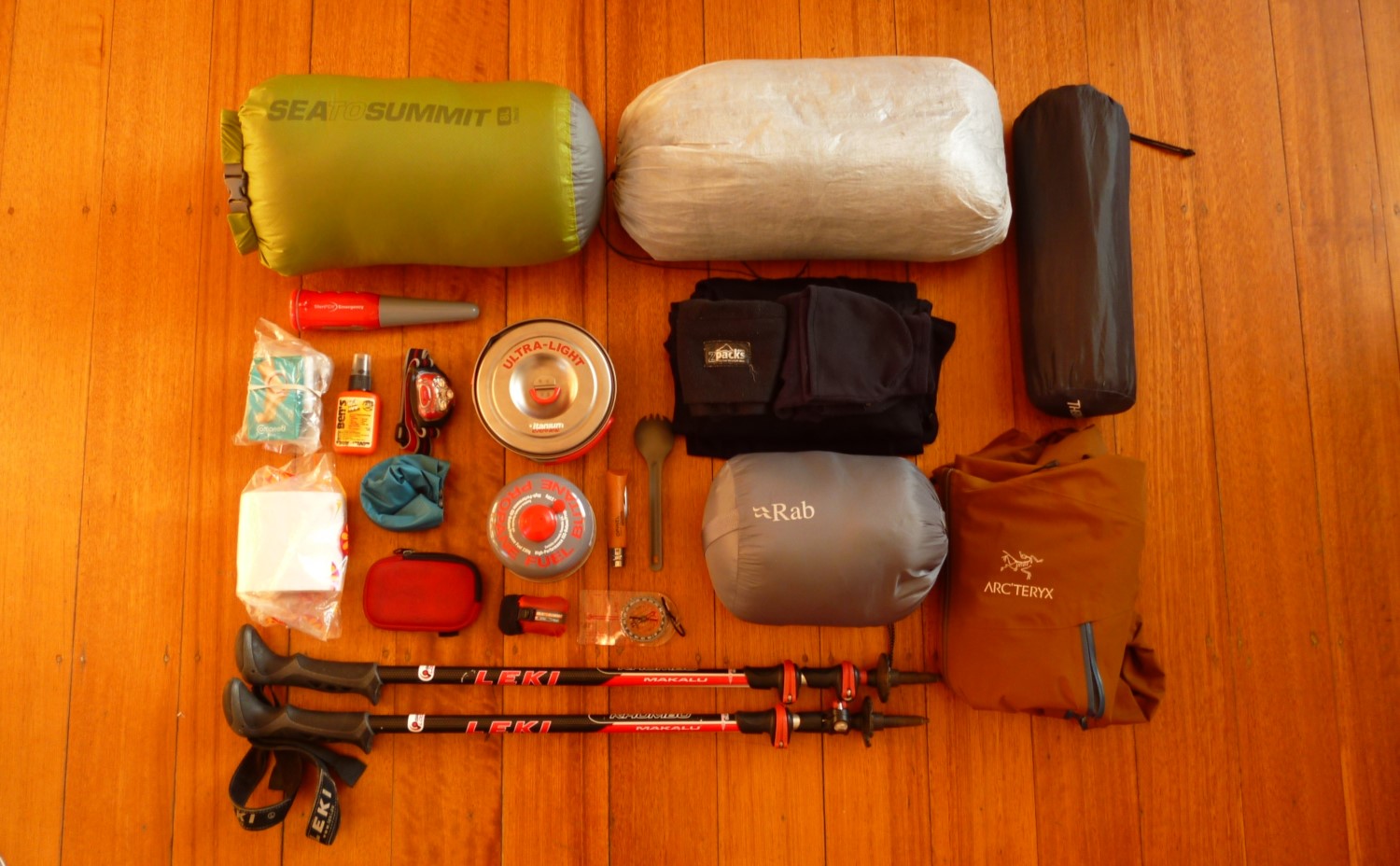Best Dive Computers of 2023
JUMP TO: SHEARWATER TERIC / SUUNTO D4i / GARMIN MK2i / SUUNTO ZOOP / SHEARWATER PERDIX AI / MARES QUAD / AQUA LUNG i470TC / CRESSI LEONARDO / BUYING ADVICE
Author: Rose Martin
The Short Version
Best Overall: Shearwater Teric
Best for Daily Wear: Suunto D4i Novo
Best for Multi-Sport Use: Garmin Descent MK2i
Best for Beginners: Suunto Zoop Novo
Best for Tech: Shearwater Perdix AI
Best for Readability: Mares Quad
Best for Convenience: Aqua Lung i470TC
Best on a Budget: Cressi Leonardo
The Long Version
Dive computers have been around since the 1980s and, since then, they’ve become a must-have bit of gear for scuba divers of every level.
Before dive computers were around, divers relied on dive tables and dive watches to plan and carry out their dives safely – tables were used to calculate no-stop bottom times for recreational dives at various depths, and watches enabled divers to stick to these times underwater. Because the dives were planned in advance, the planned bottom time couldn’t be altered mid-dive, even if the diver spontaneously ascended to a shallower depth.
Nowadays, dive computers have largely replaced the need for dive tables and watches, although some people still like to wear dive watches as a back-up (or for style!). But why is this? Well, just like dive watches, dive computers display the time, can be read in the dark, and come with a serious water-resistance rating.
But dive computers also tell you heaps of other information about your dive, like the depth and temperature, they can store information about your dives, and they come with some crucial safety features too.
On top of that, dive computers are based on the same algorithms as traditional dive tables, but they constantly recalculate your remaining bottom time during your dive based on depth. This means that divers can extend their bottom time by shallowing up mid-dive, which is a huge advantage over traditional planning methods.
Of course, that’s not to say you should give up on planning your dives – in fact, most dive computers have integrated planning modes – it just gives you a bit more flexibility once you’ve descended.
Considering how convenient and informative dive computers are, it’s not surprising they’ve taken the world of scuba diving by storm. But this surge in popularity means that there are heaps of dive computers out there, and no two are quite the same. In fact, dive computers vary hugely when it comes to factors like size, usability, and, of course, price. Plus, some are catered to beginners, while others are aimed at advanced divers, and some are designed for professional or technical divers.
Clearly, there’s quite a lot to think about before picking up your own dive computer so, to make shopping around that little bit easier, we’ve brought you this selection of the best dive computers currently on the market.
If you love reading this review of the best dive computers, then you'll likely love reading some of our other diving content:
Need To Know What To Look Out For?
New to the world of dive computers but feeling overwhelmed by all those features and technical terms? Then be sure to check out our buying advice at the bottom of the page!
Best Overall: SHEARWATER TERIC
BUTTONS: 4
DEPTH RATING: 200 m / 660 ft
DISPLAY: Color AMOLED
MEMORY: 500 hrs
GASES: Air, nitrox, trimix
AIR INTEGRATED: Optional
USER-CHANGEABLE BATTERY: No
PRICE: $$$
PROS: Very small for a technical computer, color display, highly customizable interface, freediving mode
CONS: Very expensive, technical divers may prefer a larger screen
Shearwater dive computers are known for their techy features, and the Shearwater Teric is no different.
You can use the Teric alongside air, nitrox, and trimix blends, it can handle up to 3 gas switches per dive, and it can also be set to closed-circuit or bailout modes. What’s more, the air integration feature enables monitoring of up to 4 air supplies at a time. Yet unlike most technical dive computers, the Teric comes in the form of a small watch-like computer.
The color display is bright and segmented to aid visibility, and the interface can be adapted to make sure you’re getting the information that’s important to you (and you can even choose the color scheme!). Although the dive log capacity is slightly less than that of the Shearwater Perdix, at 500 hours it remains better than most computers on the market. What’s more, unlike the Perdix, the Teric comes with a freediving mode, making it a great choice for all-round water babies. The Bluetooth compatibility makes transferring your data a breeze, and there are multiple language options available.
If you like the sound of technical dive computers, but are put off by their large size, then the Shearwater Teric could be just what you’ve been waiting for.
Best for Daily Wear: SUUNTO D4i NOVO
BUTTONS: 4
DEPTH RATING: 100 m / 328 ft
DISPLAY: ELD
MEMORY: 80 hrs
GASES: Air, nitrox
AIR INTEGRATED: Yes
USER-CHANGEABLE BATTERY: No
PRICE: $$
PROS: Freediving mode, can be worn as a watch, easy to operate
CONS: Smaller display reduces readability, battery isn’t user-replaceable
The Suunto D4i Novo is a timeless classic that’s much-loved in the scuba community thanks its great balance of style and functionality.
The D4i doubles up as an awesome watch for day-to-day wear thanks to its small dimensions, various color options, and minimalistic design, making it a great choice for dive professionals. The display is clear and easy to read, despite the small size, and we like that you can choose how long the backlight stays on after use.
The 4 buttons make navigating through the menu a breeze, and you can take your pick from air, nitrox, and freedive modes. It also comes with plenty of safety features, including optional deep stops as well as audible alarms when you ascend to rapidly (but don’t worry – the sound can also be turned off!). It can handle up to 3 gas mixtures per dive, as well as blends containing up to 50% oxygen, and the air integration feature means you can keep a close eye on your air supply.
Sadly, you can’t change the battery yourself at home, but Suunto are highly efficient when it comes to replacing or repairing parts, and the battery should keep going for at least a few years. If you want to access your dive data via a laptop of other device, then you’ll need to purchase the connecting cable separately.
Overall, if you’re after a dive watch that you can wear every day, and is a step above beginner models, the D4i should be a serious contender.
Best for Multi-Sport Use: GARMIN DESCENT MK2i
BUTTONS: 5
DEPTH RATING: 100 m / 328 ft
DISPLAY: LCD
MEMORY: 200 dives
GASES: Air, nitrox, trimix
AIR INTEGRATED: Optional
USER-CHANGEABLE BATTERY: No (but rechargeable)
PRICE: $$$
PROS: Awesome for multiple sports, GPS, smart-phone compatible
CONS: Very expensive, might be overkill if you aren’t into other sports
If you’re after a computer to track your dives, runs, swims… and pretty much any other activity, then the Garmin Descent MK2i could be right up your street.
The MK2i comes with almost all of the modes you could ask for in a dive watch, including nitrox, trimix, closed-circuit rebreather, and even apnea and spearfishing modes. We love that the 1.4’’ full color display is highly customizable, so you can make sure that you’re seeing the fields that matter to you in each mode.
What’s more, unlike most dive computers, the MK2i has an in-built GPS function that allows you to pinpoint your dive entry and exit points as well as an underwater compass – perfect for anyone mapping dive sites, carrying out research, or conducting search and recovery missions. Plus, if you go for the MK2i (rather than the MK2), then you keep an eye on the air pressure in up to 5 tanks.
But it doesn’t stop there. The MK2i is awesome above the water too, like when you’re running, biking, surfing, hiking… and doing pretty much anything else. As well as tracking your routes, the MK2i can monitor your health while you’re training to track your progress, and it will even let you know the best time to train. Plus, you can preload it with maps, trails, and workouts to use while you’re on the go.
And in case that wasn’t enough, you can load the MK2i up with up to 2,000 songs, stream music, monitor your sleep, daily stress, and respiration, and even send your location to the emergency services in emergencies (but not while you’re diving).
The battery life varies depending on what mode you’re in but, if you stick to dive mode, you’ll get up to 80 hours’ juice. Although you can’t change the battery yourself at home, you can recharge it, and it shouldn’t need replacing for at least a few years.
Designed for daily wear and smartphone-compatible (via Bluetooth) too, the Garmin Descent MK2i is a truly unique dive computer that’s great for all-round sports enthusiasts.
Best for Beginners: SUUNTO ZOOP NOVO
BUTTONS: 4
DEPTH RATING: 100 m / 328 ft
DISPLAY: LCD
MEMORY: 50 hrs
GASES: Air, nitrox
AIR INTEGRATED: No
USER-CHANGEABLE BATTERY: Yes
PRICE: $
PROS: Easy to operate, clear display, extremely durable, conservative, excellent value for money
CONS: Lacks some advanced features, bulky, USB cable must be purchased separately
The Suunto Zoop Novo has been around for years and is an awesome dive computer for scuba newbies.
The Zoop features a clear LED display that tells you key information about your dive (like time, temperature, and depth) as soon as you begin your descent and it’s great for dive planning too.
The ascent rate and overall profiling is highly conservative and, although this may be a tad irritating for advanced divers, it’s great way to get into good diving practices from the get go (as well as making sure you stay safe!). The rubber strap is large enough to wrap around a drysuit, and it can be folded back on itself to avoid ‘flapping’ when worn with a wetsuit.
The Zoop is highly durable and is likely to stay by your side as you progress from a beginner to a more advanced diver – in fact, my Zoop lasted me right the way through from a total newbie to a dive professional. We also like that the battery can be replaced at home when the time comes (but it’ll be years until this happens!). Although it does have a nitrox mode, this computer lacks other advanced features, such as integrated air options, so makes an awesome back-up computer (rather than primary computer) for professional divers.
This Zoop is also very reasonable priced, and it comes with a freediving mode too, so you’re essentially getting two-for-one. Finally, if you enjoy getting your geek on and checking out your stats post-dives, you can hook up this computer to your actual computer via USB (but it’ll cost you extra for the cable).
Probably the major flaw of this easy-to-use, durable computer is its size – it’s easy to read, but it’s far too bulky to wear as a day-to-day watch. But, if you can deal with this, then the Suunto Zoop Novo has plenty to offer at a very reasonable price point.
Best for Tech: SHEARWATER PERDIX AI
BUTTONS: 2
DEPTH RATING: 850 ft / 260 m
DISPLAY: Color LCD
MEMORY: 1000 hrs
GASES: Air, nitrox, trimix
AIR INTEGRATED: Optional
USER-CHANGEABLE BATTERY: Yes
PRICE: $$$
PROS: Incredible display, awesome memory, versatile configurations, detailed information
CONS: Bulky, very expensive
The Shearwater Perdix AI is our top pick when it comes to technical dive computers thanks to its awesome display, customizability, and abundance of extra features.
Not only is the screen extra-large, but it’s also colored and you can even adjust the brightness to your optimal setting. The information provided on the screen depends on the mode selected and highly customizable, and the Perdix is compatible with nitrox, up to three blends per dive, trimix, and closed-circuit systems. What’s more, if you opt for the air integrated model, no matter what mode you go for, you can connect to up to four transmitters, which is great for monitoring students as well as diving with multiple tanks (or even both!).
Although the Perdix is packed full of technical features, you’ll be pleased (and perhaps slightly surprised) to hear that it’s powered by AA batteries. They can be swapped out at home, are widely accessible, and there’s even a battery indicator on the display, so you shouldn’t ever find yourself stuck without power. Similarly, the transmitters run off CR2 batteries, so you can easily take a few spares with you for emergencies.
When it comes to accessing your dive data, things couldn’t be easier – pair up your device with the Perdix via Bluetooth and you can download any information you might need. And don’t worry if you’re the forgetful type, the Perdix has an incredible 1000-hour memory!
Of course, the Perdix is far too large to be worn as a regular watch, and it doesn’t come with a freediving mode either. Yet, for most people, the large size is a huge plus, and it comes with pretty much every other mode you can think of, so the lack of a freediving mode is forgivable. If these are big sticking points for you, however, then why not check out the Shearwater Teric – it comes with all the techy features but packaged into a wrist-mounted parcel with a freediving mode.
Best for Readability: MARES QUAD
BUTTONS: 4
DEPTH RATING: 492 ft / 150 m
DISPLAY: LCD
MEMORY: 38 hrs
GASES: Air, nitrox
AIR INTEGRATED: Optional
USER-CHANGEABLE BATTERY: Yes
PRICE: $
PROS: Large display is super easy to read, affordable, easy to operate with gloves
CONS: Bulky, heavy
Hate wasting precious time underwater squinting at your dive computer? Sounds like the Mares Quad could be the one for you!
Featuring an extra-large screen, incredibly clear display, and bright LCD backlight, the Mares Quad is one of the easiest to read dive computers of all time.
The segmented display makes sure you don’t misread any information, and there’s even enough space to provide your bottom time down to the second. On land, the four buttons make switching between modes, planning, and viewing your log a breeze. And, underwater, they form two mirrored buttons (the top two perform the same function and so do the bottom two), so navigating is super easy regardless of which wrist the computer is on.
The battery can be changed at home, and we love that there’s a power indicator so you’ll never get caught out without any juice. This Quad is nitrox-compatible, and you can use up to three gas mixes per dive. We also like that there are standard and air integrated options available, so you don’t have to waste money on a function you don’t need.
The screen is so large that you might view all your logs straight off the computer itself but, if you do want to transfer your data, you have the option of using a cable or Bluetooth. Oh, and it might not be your primary reason to go for a Quad, but we love that it’s available in a few different colors.
Sure, this computer is just that – a computer – and isn’t designed to be worn as a day-to-day watch. But, if you’re after a computer with a fantastically clear display that offers great value for money, the Mares Quad could be just what you’re looking for.
Best for Convenience: AQUA LUNG i470TC
BUTTONS: 2
DEPTH RATING: 393 ft / 120 m
DISPLAY: LCD
MEMORY: 24 dives
GASES: Air, nitrox
AIR INTEGRATED: Yes
USER-CHANGEABLE BATTERY: Yes
PRICE: $$
PROS: Can be worn as a watch, freedive mode, pairs with three transmitters, easy to use, rugged, Bluetooth connectivity
CONS: Short memory, slightly small display
If convenience is the name of the game, then we definitely recommend the Aqua Lung i470TC.
This super stylish computer is so compact that it can be worn as a regular watch too, which is super handy if you’ll be on and off the boat all day. Plus, the small size has helped to keep the weight low, making this dive computer watch an ideal travel companion. Oh, and don’t worry about your battery dying on you mid-trip – you can take a spare with you just in case since it’s user-replaceable.
Although the small dimensions have reduced the display size slightly, the i470TC is still extremely easy to navigate thanks to its intuitive layout, and you can access your dive log with just the push of a button. Plus, if you prefer to check out your profiles on a larger screen, you can hook this computer up to your laptop, phone, or tablet with minimal effort thanks to the Bluetooth connectivity and Aqua Lung’s dive log app. If you’re big into logging, just remember to back up your dives every now and then, because this watch can only remember 24 dives.
This i470TC doubles up as a freediving computer, and it’s nitrox compatible too. On top of that, it works with air mixes containing up to 100% oxygen and it allows three gas switches per dive. And not only is it air-integrated, but you can pair it up with up to 3 transmitters, which can come in super handy for instructors wanting to keep an eye on their student’s air supplies.
Compact and convenient, yet packed full of advanced features, the Aqua Lung i470TC ticks all but the most technical of boxes.
Best on a Budget: CRESSI LEONARDO
BUTTONS: 1
DEPTH RATING: 328 ft / 100 m
DISPLAY: LCD
MEMORY: 60 hrs
GASES: Air, nitrox
AIR INTEGRATED: No
USER-CHANGEABLE BATTERY: Yes
PRICE: $
PROS: Affordable, easy to use, durable, lots of colors available
CONS: Lacks fancy features, backlight could be brighter
If you’re on the hunt for an easy-to-use, dependable dive computer, but don’t have much cash to splash, then you should definitely check out the Cressi Leonardo.
The Leonardo is catered to beginner divers and is incredible easy to read and use. The large screen is segmented to aid readability, and the single-button interface makes selecting modes super easy – even when wearing gloves. We love that the LED backlight activates automatically when the safety alarms go off, but we wish it was a tad brighter. The safety alerts include alarms for missed safety stops, rapid ascents, and oxygen toxicity, so it’s an awesome computer for scuba newbies.
The Leonardo is also incredible rugged, making it extremely popular among rental stores as well as people who don’t like to be precious about their gear. In fact, this computer is so durable that you’ll most likely end up using it as a back-up computer years down the line, so it’s a great investment. Plus, when the time comes, you can easily replace the battery at home without having to pay out for a replacement service.
We like that the Leonardo can be wiped after each dive, so you can safely share it with a friend or family member who’s diving after you. Or, if you prefer to log your dives, the Leonardo can store 75 hours’ worth of dive information, which you can access via the screen or via a laptop – but you’ll have to pick up the download kit separately, and it isn’t the cheapest we’ve seen.
As with many beginner dive computers, you won’t get features like air integration or multi-gas compatibility (although it does have a nitrox mode), and it’s also too bulky for day-today wear. But, if you’re after something rugged and dependable, you won’t get much better for this price.
BUYING ADVICE FOR DIVE COMPUTERS
So, there you have it, our list of the best dive computers around. As we’ve seen, they vary a lot when it comes to price, size, and extra features. In case you’re still struggling to decide which one is right for you, here are a few things to think about when you’re shopping around.
Gases
AIR: All computers have a standard air mode. This mode assumes that your tank contains ordinary air (just like the air we breathe on land) and uses this information, as well as your depth, to calculate your no decompression limit.
NITROX: Nitrox blends contain more oxygen and less nitrogen than regular air. Because there’s less nitrogen in the mix, divers can remain at depth for longer before they reach their no-decompression limit (yay). It also helps some people to feel less tired after diving, particularly older people or people diving multiple times a day.
But divers need to be careful – the increased amount of oxygen in the tank increases the risk of divers developing oxygen toxicity. Computers that are nitrox-compatible use the proportions of each gas (which you enter manually) to calculate this risk, so you can avoid approaching toxic oxygen levels.
Recreational divers typically use blends containing either 32% or 3% oxygen, and most dive computers aimed at intermediate-level divers can handle blends of up to 50% oxygen. If you’ll be using higher bends, you’ll need to make sure that your computer is compatible.
TRIMIX: Just like nitrox-compatible dive computers, trimix-compatible dive computers let you keep an eye on your no decompression limit as well as oxygen toxicity. Yet they base their calculations on the proportions of three gases – oxygen, nitrogen, and trimix.
Helium reduces the effects of nitrogen and oxygen at depth, so trimix is popular among technical and commercial divers (but most recreational divers will never use this feature).
MULTIPLE: Some computers will also allow you to switch gases during your dive. This is typically done on ascent, where divers switch gases to breathe air that’s oxygen-rich to decrease their decompression time. Most recreational divers will never use this feature, but if you’re into technical diving, then it’s a must-have.
Modes
WATCH: This one’s pretty self-explanatory – you can use most dive watches as a regular watch when you’re on land, although you’ll probably only want to do this if your computer is fairly small.
FREEDIVE: Although this isn’t an essential feature in a dive computer, it’s an awesome touch if you’re into freediving as well as scuba diving. In this mode, your computer will monitor your depth so you can track your progress as well as helping you freedive within safe limits. Just make sure you always remember to switch back the correct mode before each activity, or else your computer won’t be happy (or helpful!).
GAUGE: In this mode, your computer tells you your depth, and usually the time, but it won’t display additional information such as your bottom time or no-decompression limit. This mode is typically used for back-up computers only.
REBREATHER: Some of the techy dive computers out there will also have a rebreather (or closed-circuit rebreather – CCR) mode that allows you to set low and high modes – but most recreational divers will never use this mode.
Battery
REPLACEMENT: Most dive computers come with decent batteries that will last you a good few years even with extended use, but eventually they’ll need replacing. Some computers require specialist replacement, whereas others can be replaced at home.
As well as saving you time and money, user-replaceable batteries give you the option of taking a spare battery with you on your diving adventures, which can be super handy if you’ll be diving in remote locations. Despite this, some people prefer to get batteries replaced professionally, so that their warrantees will remain valid (you won’t be covered if you make a mistake).
RECHARGEABLE: Although rare, there are some dive computers out there will rechargeable batteries. These mean you don’t have to wait (or pay) for your computer to be serviced by an expert, and you don’t have to worry about making a mistake either. At the moment, though, rechargeable batteries tend to be reserved for high-end, technical dive computers, although their popularity is on the rise and they may be integrated into budget options over the next few years.
Extra Features
AIR INTEGRATION: Dive computers that are integrated can display how much air you have left in your tank by pairing up with a transmitter that’s connected to your regulator’s first stage. What’s more, by pairing your computer up to multiple transmitters, you can monitor the air supply of several tanks.
This can be super handy when you’re guiding or teaching small groups of divers, as you can see directly how much air they have left – but bear in mind that they’ll have to be within fairly close range for this feature to work. Also, check out how many transmitters your computers can pair up with – for some it’s just one while others it’s four. Air integration is also handy for people who like to dive with multiple tanks, like sidemount divers.
For lots of dive computers, you can select air integrated or standard models, but for others, you’ll have to decide. Remember that air integrated models will cost more, and you’ll often have to shell out extra for the transmitters too, so it’s only worth it if you’ll actually use it.
CONNECTIVITY: Some people have no interest in logging their dives – their computer is just a tool to use when diving. And for people who do like to log their dives, you can access your recent dive history by navigating through your computer’s menu.
But some people love to check out their dives in detail, and this is best done on a larger screen. Some computers have compatible USB cables that allow their data to be transferred to other devices, while some of the most modern dive computers skip out the wire altogether and send dive data via Bluetooth. The cables typically cost a bit more, and you might have to up your budget to find a computer that’s Bluetooth-compatible (typically the cheapest ones aren’t). So, again, think about how important connectivity really is for you!
MORE INFORMATION
If you loved this gear review article, then you'll likely love getting submerged in our other underwater content:
Or check out our entire list of Gear Reviews, Knowledge Base Articles, or Destination Guides for more diving, snorkeling, and outdoors related content.





















